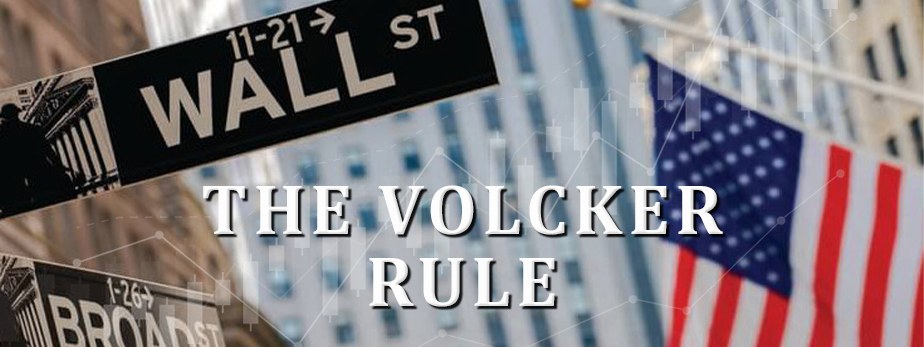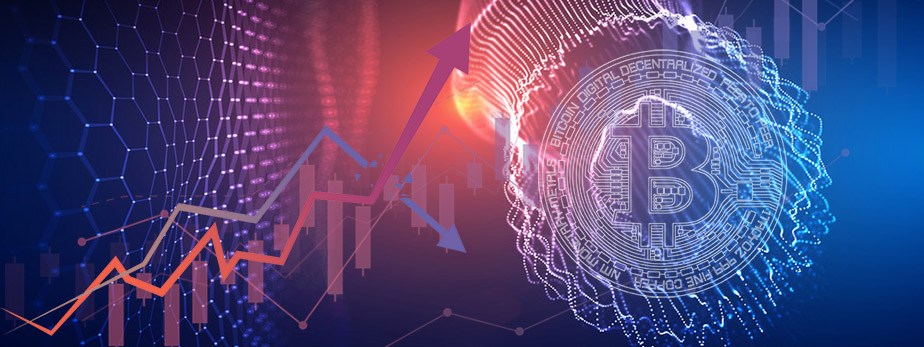Banks up on Volcker Rule Reform, but Down on Stress Tests
Commercial banks will now be able to invest main street savings as investments as it used to happen in the years of the last Great Recession, according to a note published by the Federal Deposit Insurance Corporation on Thursday.
As a matter of context, the Volcker Rule is part of the Dodd-Frank Wall Street Reform and Consumer Protection Act passed to avoid another financial crisis due to risk-taking banks. It was proposed by former Federal Reserve Chairman Paul Volcker.
It prohibited banks from making speculative investments that are not for the benefit of their customers. The rule is also known as a ban on proprietary trading by commercial banks.
The Reform of The Volcker Rule
The decision looks similar to the one taken against the Glass–Steagall Act in 1933. In that piece of legislation, lawmakers introduced four provisions to separate retail commercial and investment banking.
As you may know, while investment banks are gamblers, commercial banks are where common people have their savings and checking accounts.
After the Great Depression almost a century ago, the US Congress wanted to put a firewall between both kinds of banks. In that way, in the case Wall Street was melted down, retail banks and main street savings wouldn't be touched.
The Glass-Steagall Act was the framework for the most extensive time period of economic growth in the United States history and a 60 year expansion of the middle class, the largest increase in productivity and the average income.
Then, in 1999 the Glass‐Steagall was partially repealed by the Gramm‐Leach‐Bliley Act. In 2007, the Great Recession started.
As a matter of fact, there is no quid pro quo between the Glass-Steagall Act's repeal and the financial crisis less than ten years later. But it is true that the impact of the economic meltdown suffered globally and that almost erased capitalism was caused by the absence of a firewall.
Don’t get me wrong, I love volatility and liquidity, but it is always good to have a safety net as every professional trader has stop losses.
Banks’ Reaction
Back to the present, as the press note said, US banking regulators would ease restrictions from the Volcker Rule, and banks would be allowed to move into trading and venture capitals more easily.
Banks cheered the FDIC decision as, theoretically, it would free up billions of dollars for the financial industry. On the downside, it would be like another money pumping factor that would push stocks artificially up. Also, it could create bubbles.
In any case, the bank industry closed 2.08 percent positive on Thursday, following the news. 351 of 483 underlying stocks posted gains on the day. In the last month, the bank sector is higher by around 5.0 percent. The leaders are Harvest Community, which HCBP shares are 140 percent up, and Guaranty Financial Corporation, with the GFCJ unit being 59.10 percent positive.
In the last three months to today, banks have rallied 17.37 percent.
Fed Adds Restrictions on Bank Dividends Due to Pandemic Risk Found in The Stress Test
The Federal Reserve added new restrictions to banks in the United States after it ran its annual stress test check. According to the Federal Reserve, banks could get too close to low minimum capital levels in scenarios related to coronavirus pandemic.
Among the decisions, big banks will be required to stop share buyback programs and capital dividend payments at current levels for the third quarter of 2020.
Besides, the Fed is increasing its vigilance on banks, and the institutions will have to resubmit payout plans later this year.
According to the Fed's results, in the worst case scenario, banks would have to deal with as much as 700 billion dollars in loan losses with an unemployment rate of 19.5 percent.
However, the Fed also highlighted the strength of the banking system in the United States.
Vice Chair Randal K. Quarles said:
The banking system has been a source of strength during this crisis, and the results of our sensitivity analyses show that our banks can remain strong in the face of even the harshest shocks.
The stress test included three potential downside scenarios as a result of the coronavirus pandemic. "The scenarios included a V-shaped recession and recovery; a slower, U-shaped recession and recovery; and a W-shaped, double-dip recession."
Banks Under Pressure

On Friday, banks are trading down mainly affected by the stress test results. As you may know, most investors trade shares for potential earnings and dividends. So, the decision affects their interest.
The bank sector is 2.04 percent down on Friday, cutting almost all Thursday's gains. 346 stocks are trading down, just 99 are positive on the day.
According to chief strategist at Miller Tabak, Matt Maley, charts indicate that banks are at a crossroad as KBE bank ETF, a reference for the sector, hit lows in March, but highs in June. He sees a "head-and-shoulders pattern" with the ETF now at minimums.
Maley said:
It’s a critical juncture. If they react negatively [to the stress tests] that neckline is going to be broken in a meaningful fashion and it’s going to be quite negative. If it’s a positive reaction and they bounce back and take out their June highs, it’s going to be very, very bullish.

Mauricio is a newer member of the team and a very welcome addition. He is a financial journalist and trader with over ten years of experience in stocks, Forex, commodities, and cryptocurrencies. This experience means he has an excellent understanding of the markets and current events.

 News Home
News Home
 Privacy Policy
Privacy Policy
 About Us
About Us







